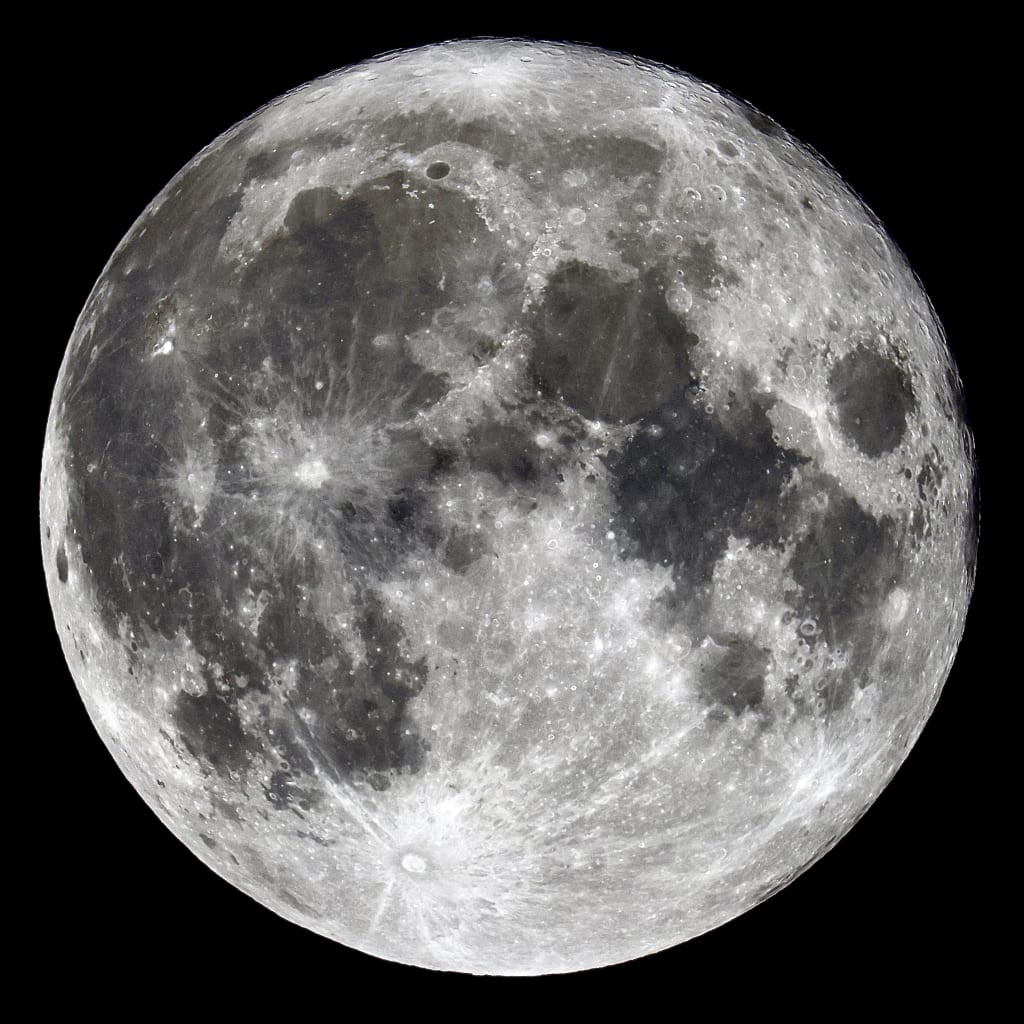The Moon Holds Water Reserves After All! Can it Inhabit life
The Moon's Liquid Surprise: Water Sources Discovered by Scientists

For a long time, scientists believed that the moon was formed due to a massive collision with Earth. It was proposed that a celestial body about the size of Mars collided with Earth, causing some of the Earth's crust to shatter. The resulting debris then came together and formed the moon. However, this theory raised a puzzling question: Earth's crust is relatively low in metals, so how did the moon end up with such a significant amount of metal within it? Recent research has challenged this main theory, leaving us uncertain about the true origin of our closest neighbour.
One interesting discovery was made a couple of years ago when scientists found iron in the higher regions of the moon. Surprisingly, they observed that the iron was oxidized and rusting. Initially, this finding confused astronomers as the presence of rust could potentially mean that certain areas of the moon could support human life. However, a possible explanation emerged: oxygen from our own planet might have reached the lifeless rock of the moon due to the absence of an atmosphere. Relentless solar winds could have carried oxygen from the upper layers of Earth's atmosphere all the way to the moon, causing the rusting phenomenon. This sheds new light on our understanding of the moon's composition and its potential implications for future lunar exploration.

The molecules eventually come to rest at the highest points on the moon's surface, which explains why metals remain unoxidized in the ravines and beneath the satellite's surface. On Earth, the origin of water has been a mysterious puzzle with the prevailing theory suggesting it arrived through icy comets and asteroids, leaving behind craters and the life-sustaining liquid. However, a recent advancement proposes another intriguing scenario: space contains abundant organic matter, which, under specific conditions, can yield vast amounts of water, possibly enough to fill our oceans a thousand times over. In an experiment, researchers heated this organic matter and obtained clear water and oil.
If future studies confirm this finding, it could challenge the notion that oil on Earth solely comes from fossilized remains and suggest that it may have extraterrestrial origins as well. The climate changes we are currently witnessing are likely part of a natural cycle. Researchers from the University of California Santa Cruz have identified patterns in our planet's climate variations, resembling extremely long seasons that can endure for millions of years. These climate states, named Ice House, Cool House, Warm House, and Hot House based on prevalent temperatures, have been recurring over the past three million years.

The contents of these lunar tubes remain uncertain, with possible explanations ranging from tunnel systems to geological wonders. One popular hypothesis suggests that these tubes are lava tubes, similar to those found on Earth. When lava flows cool and develops a hardened crust, it can create a roof over the still-flowing lava. Once the lava flow stops, the channel can empty out, leaving behind an empty tube-like structure.
Furthermore, the this tubes were believed to have been ocean on Europa which seems to be salty, as indicated by the red streaks on its surface, likely consisting of a frozen mixture of water and salts. This peculiar composition is not akin to any known substance on Earth. Additionally, the yellow spots observed on Europa's surface may be caused by the presence of sodium chloride, commonly known as table salt. Scientists have attempted to recreate Europa's conditions in laboratory settings, and through a combination of water, table salt, freezing temperatures, and high pressure, they produced a new kind of solid crystal that might exist both at the bottom of Europa's ocean and on its surface.
Despite these discoveries, many questions remain unanswered, leaving researchers in the dark. Nonetheless, they anticipate finding answers to some of these mysteries around the year 2030.
About the Creator
Diana Aba Yorke
I am a passionate dreamer, always striving to make a positive impact on those around me. With a heart full of wanderlust and a mind bursting with ideas, I embark on a journey of exploration to share the wonders of the world.






Comments
There are no comments for this story
Be the first to respond and start the conversation.